Does the word audit run a shiver down your gut?
It happens to many digital marketers, even if it’s not tax related.
Conducting a social media audit is critical to measure the performance of your social media strategy.
How else would you know what works for your business and what needs to improve!
This tutorial includes 7 easy steps to perform a comprehensive social media audit. It won’t cost you a penny.
- Frequently Asked Questions
- What You’ll Need To Perform a Social Media Audit
- How To Perform a Social Media Audit for Free: Step-by-Step Instructions
- Step 01: Download a Free Social Media Audit Template
- Step 02: List All Your Social Media Accounts on the Web
- Step 03: Modernize the Brand’s Social Media Presence
- Step 04: Set a Mission for Your Social Media Activity
- Step 05: Note Down Key Performance Metrics and Analyze
- Step 06: Understand the Type of Follower You Have
- Step 07: Create Actionable Plans for Your Social Media Strategy
- Similar Tutorials To Check Out
- Wrapping Up
Frequently Asked Questions
What Is a Social Media Audit?
A social media audit evaluates the strengths and weaknesses of your social media marketing strategies.
Analyzing performance metrics like engagement, demographics, conversion, and such can give you a comprehensive idea to make your social media activities more effective for your business.
What Is the Best Way To Run a Social Media Audit?
Starting with a free template can be the best way to run a social media audit. This would help you avoid starting from scratch and save time.
The template would have columns to record and analyze vital metrics, which you can customize to suit your business goals.
What You’ll Need To Perform a Social Media Audit
Although most social media channels focus on mobile use, you may want to perform your social media audit on a computer for a bigger screen and quick navigation.
You should also have the following things at hand:
- A reliable internet connection and a web browser to access different social media platforms. You can use mobile apps as well.
- A spreadsheet editing tool to customize and populate your template. You can use Google Sheets for free.
- A social media audit template compatible with Google Sheets. Many free templates are available online, so check which has the metrics you need.
- Access to social accounts across all social channels. This will help you measure the performance of each using their built-in analytics tools.
How To Perform a Social Media Audit for Free: Step-by-Step Instructions
Several social media tools can help you analyze the performance of your social profile and the content you share.
A comprehensive social media audit needs to go beyond that and should include multiple steps.
Doing so would give you the most comprehensive view of what works for your customers and what doesn’t.
Step 01: Download a Free Social Media Audit Template
It’s super easy to find a free template for social media audits by conducting a Google search.
Your chosen template should have sections for general info, performance metrics, SWOT analysis, etc.
Hootsuite offers a powerful auditing template for free. Get it by clicking on the link and providing basic information about you and your company.
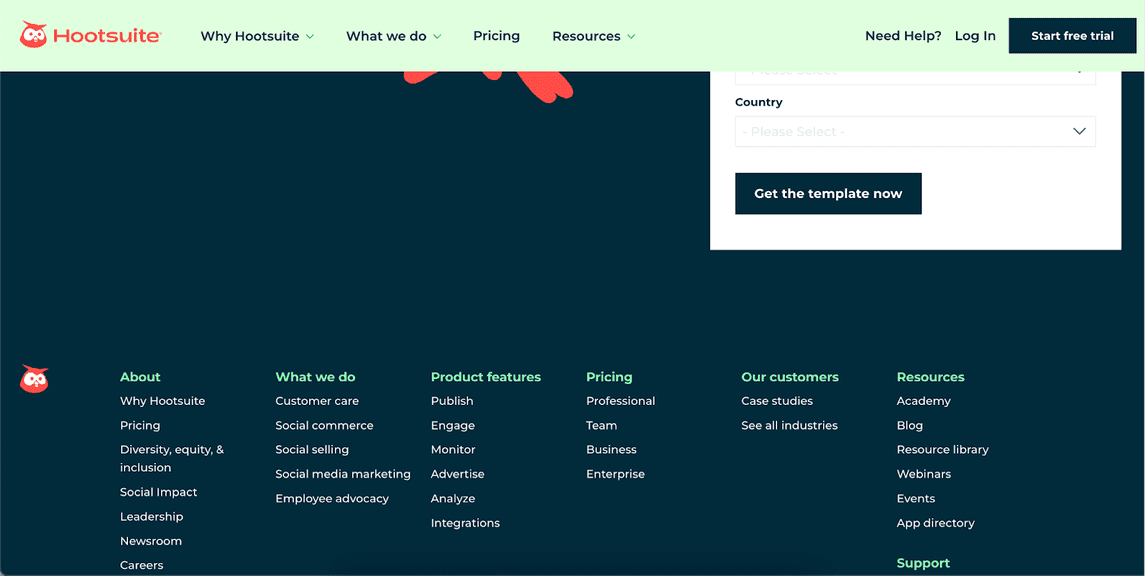
The template should also be editable in your preferred spreadsheet editor.
For example, a PDF template wouldn’t work well with Microsoft Excel.
You have to make a copy of the spreadsheet once it opens in your Google Sheets before using it.
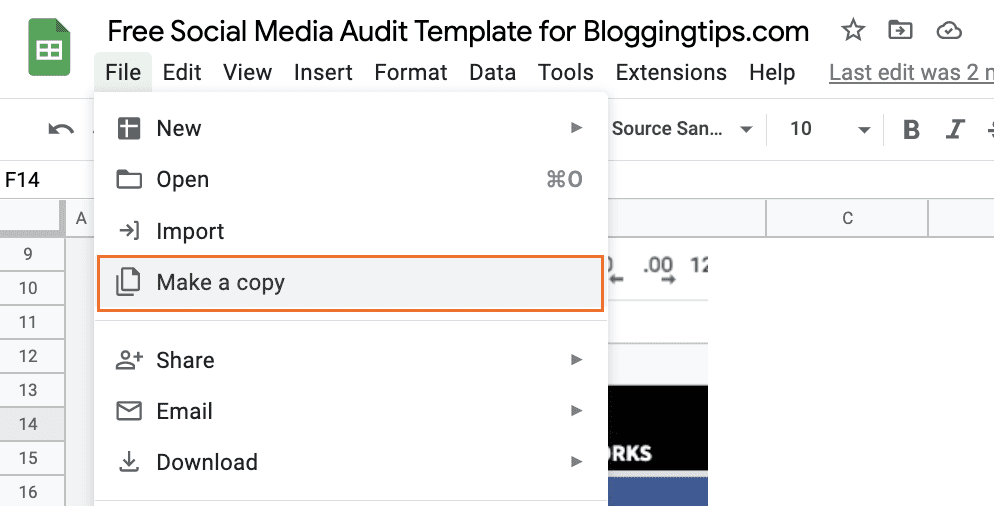
Step 02: List All Your Social Media Accounts on the Web
Do you know all the social media profiles your business has? Surely you have forgotten about one or two?
Start your audit by tracking your accounts on renowned social media platforms and listing them on your template’s summary page.
Navigate to each platform like Facebook, Instagram, Twitter, etc., then quickly search with your business or product name.
Then list the username or handle, profile URL, channel owner, etc.
You can also take note of some basic metrics like the follower count, most recent post, etc.
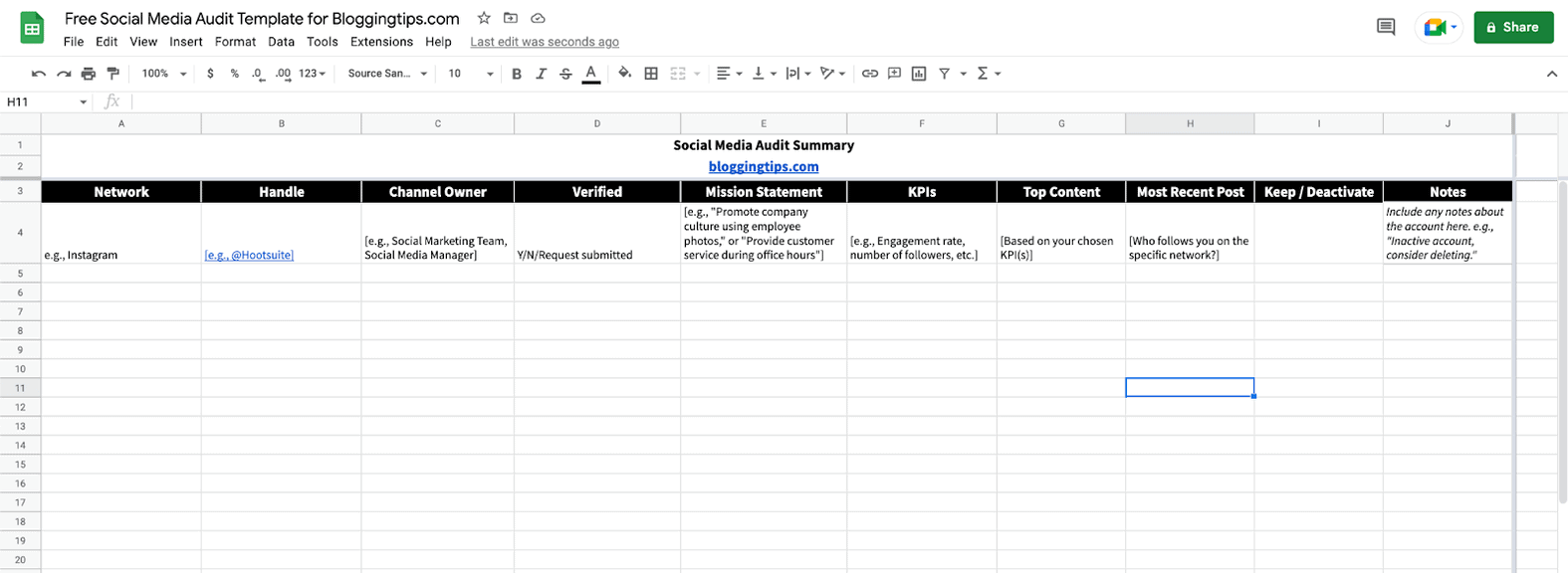
Step 2.1: Don’t Ignore Any Prominent Social Media Channels
Even if you aren’t aware of having an account on a particular social media channel, try using its search bar to find your brand or business.
It may bring unexpected results like a long-forgotten testing account, fake accounts impersonating your brand, etc.
Note them and plan how you deal with an imposter social profile. You can try to claim them or report them for removal.
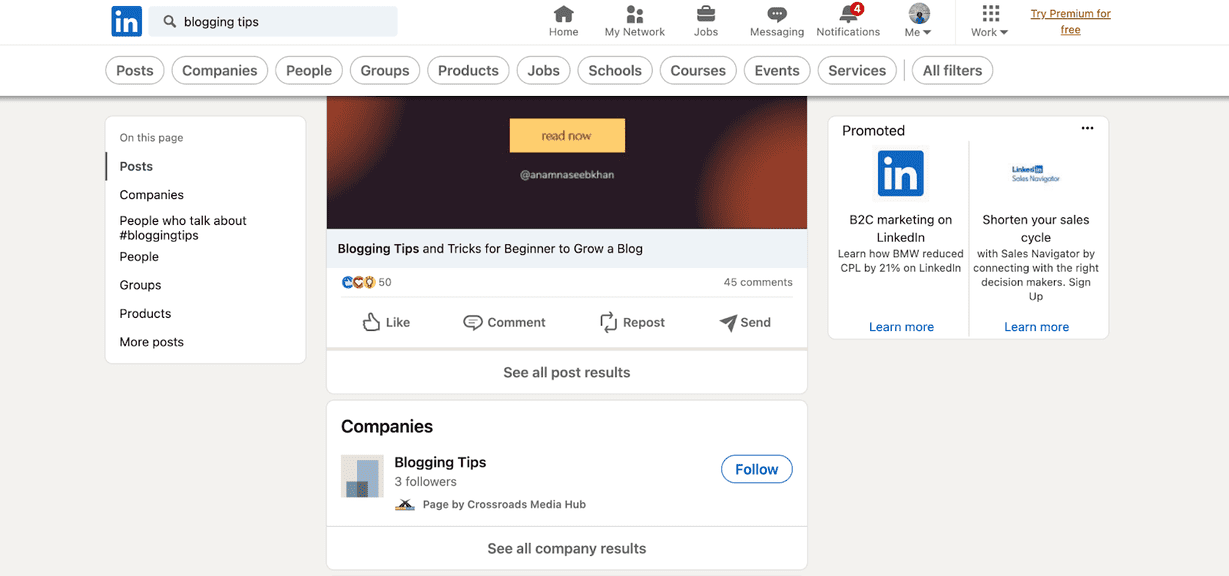
Step 2.2: Consider New Social Media Channels for Engagement
While at it, consider social media channels where your business doesn’t have an account.
Why aren’t you on this platform? Don’t you have any followers there to connect with?
As you think of these, you will find clarity about whether you should increase the brand’s activity and which new platform to add to your social media strategy.
Even if you don’t plan to be active on a channel (i.e., TikTok), it’s best to create an account just to reserve a professional handle for your business.
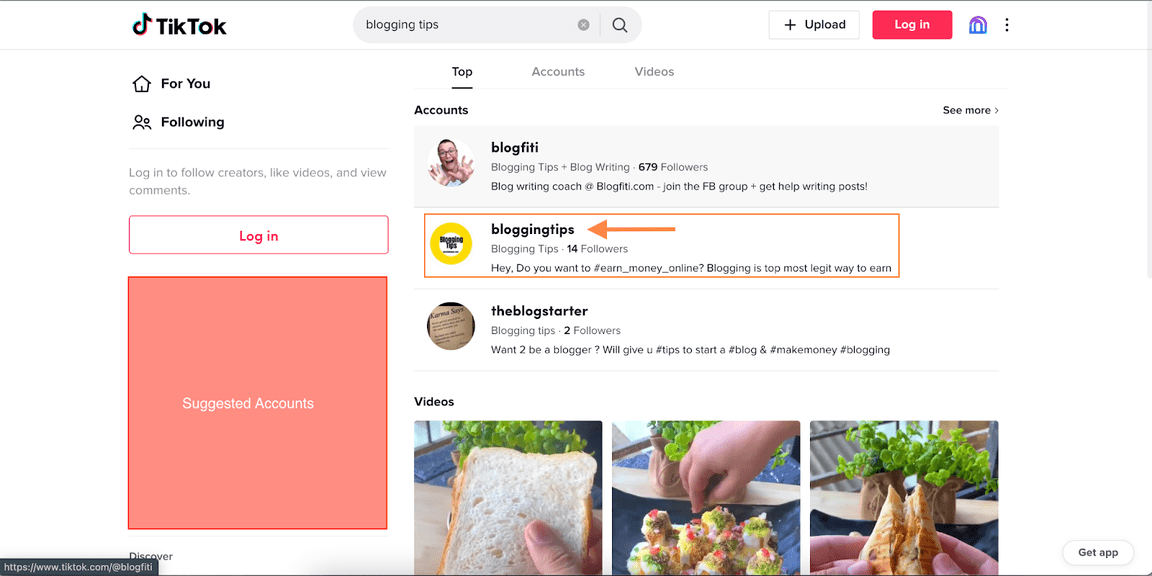
Step 03: Modernize the Brand’s Social Media Presence
Dive into your brand’s social media profiles on different platforms and analyze their appearance.
For easy recognition, you should have a similar appearance – profile picture and cover photo – on all platforms.
The design of your social profile should be aligned with your brand’s look and feel. If not, ask your social media management team to give them an immediate makeover.
Your bio and pinned posts (if you have any) should also be updated to align them with your brand’s goals.
If you offer different content on different platforms (i.e., tutorial videos on YouTube and company updates on Twitter), ensure a follower can know that right from the bio.

Step 04: Set a Mission for Your Social Media Activity
Notice the “Mission Statement” column in the social media audit template? You can find it in the summary tab.
Write a mission for each of the brand’s active social media channels.
These are the guiding principles for your social media marketing efforts.
Some examples of social media marketing missions can be:
- Multiplying your brand’s follower number.
- Increasing social media engagement.
- Increasing the number of visits to your website.
- Reaching out to a new target audience and generating leads.
Set on a mission, you will be able to measure the performance of a particular social media strategy.
These will also help you to understand which key performance metrics to consider (follower count vs. total impressions or conversion) for each platform.
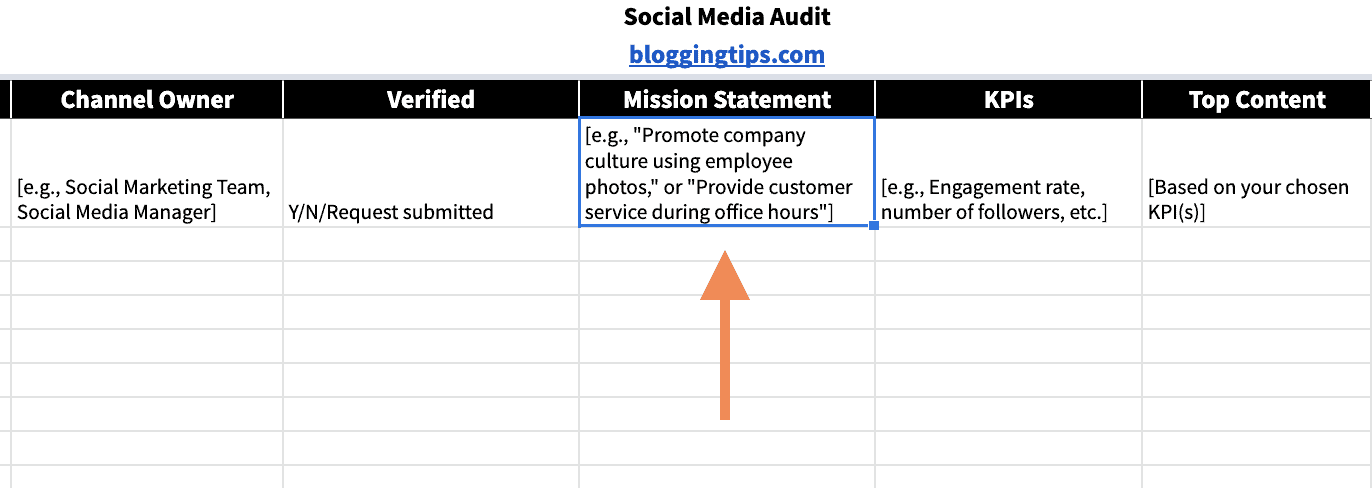
Step 05: Note Down Key Performance Metrics and Analyze
You will find specific pages for particular social media channels on the social media audit template.
Navigate to them one by one and update their mission statement.
Next, head over to the social media profile on each platform and note down KPIs under the performance tab.
You should know which performance indicator to consider based on your social media marketing missions.

For example, if your Instagram profile aims to enhance brand awareness, you should note the engagement rate.
Also, measure the year-over-year change and note it down.
You will find many of these numbers from the platform’s default analytics tool (like Insights on Facebook), while Google Analytics can measure your website traffic received from social networks.
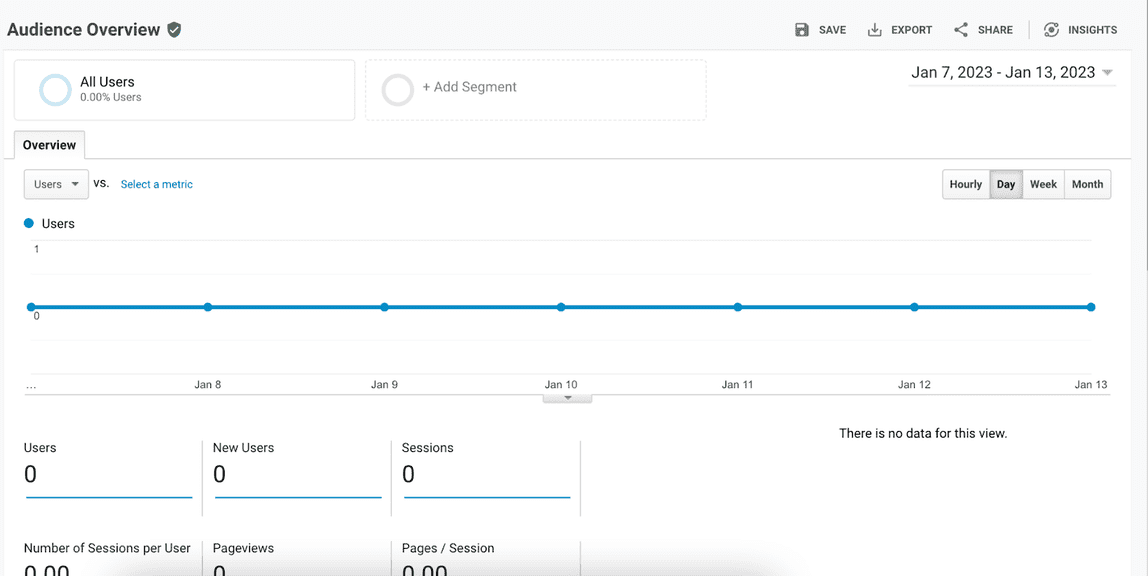
Effective social media audits would also include the top-performing post (i.e., most engagement) to create a sound social media strategy.
Step 5.1: Compare the Results of Each Social Network
Comparing your social media efforts against the actual social media performance will tell you which platform is the most rewarding.
You should also compare each platform’s KPI and year-over-year changes side-by-side.
This will set the course for your future social media management effort.
Is your graphic content performing poorly on Facebook? What can you do to improve it?
This should also enable your social media audits to find an alternative platform that may work better for your brand or content type.
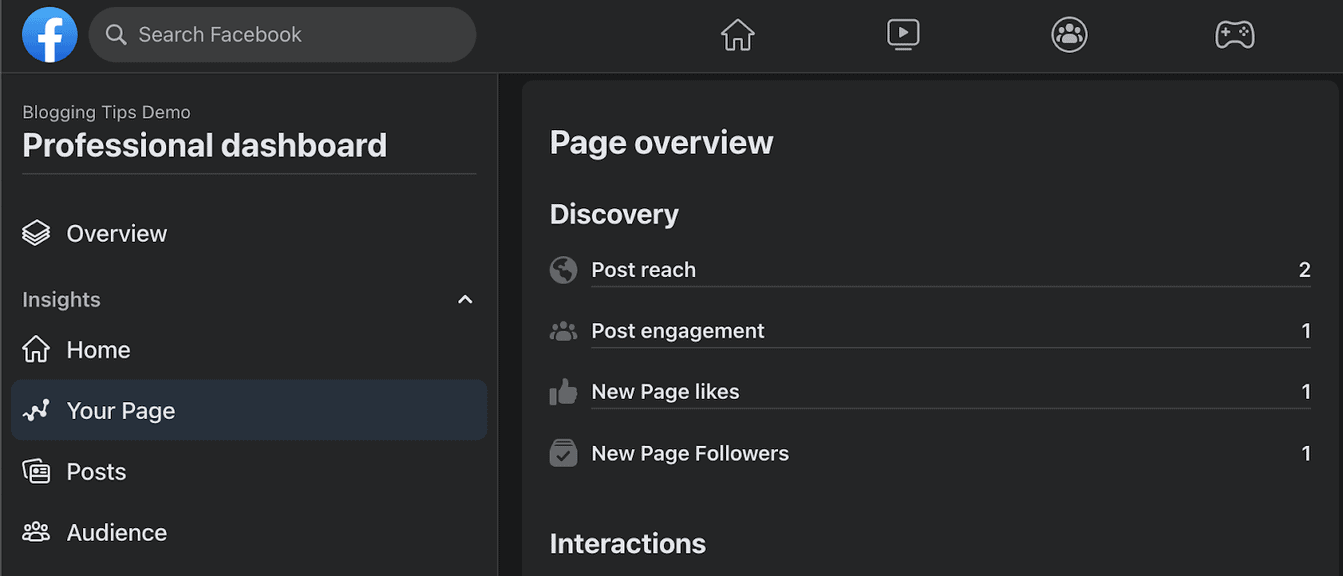
Step 5.2: Conduct a SWOT Analysis Against Competitors
A SWOT analysis against your brand’s competitors can enrich social media audits.
Scroll down on a specific social network page in your social media audit template (i.e., Instagram or Pinterest) to find the SWOT analysis section.
Use this to find your social media strategy’s strengths, weaknesses, opportunities, and threats.
This step would require you to find the performance data of your competitors.
You can use third-party social media tools like Sprout Social or Hootsuite to explore your competitor’s strategy, but these tools require a subscription fee after the trial period.
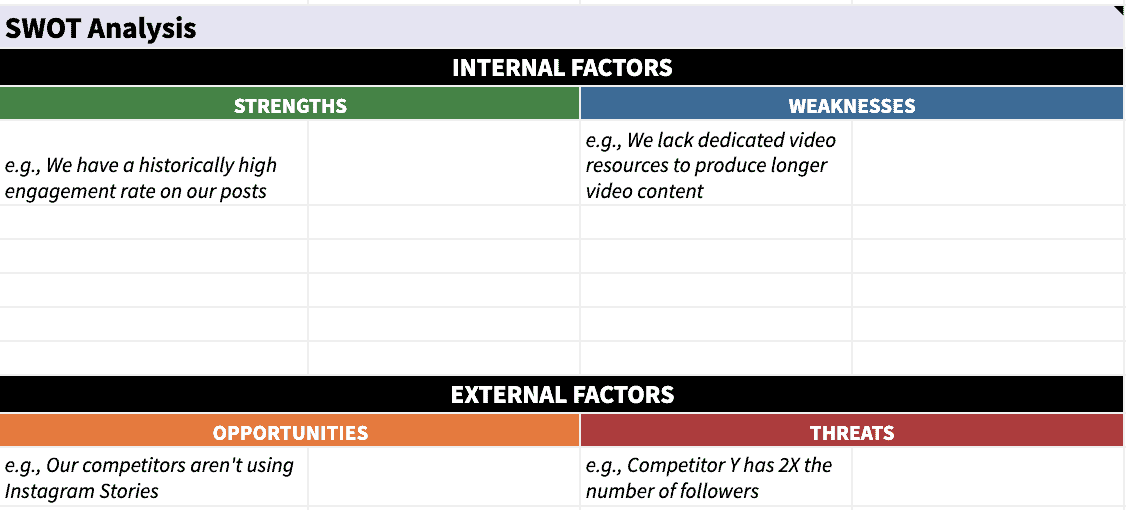
Step 06: Understand the Type of Follower You Have
Your social media strategy must cater to your audience, so understanding them should be a vital objective of any social media audit.
Fortunately, your social media management team can quickly pull critical demographic information from the platform’s default analytical tool (i.e., Twitter Analytics).
On Facebook, head to your page’s “Professional dashboard” and click on “Audience” from the left sidebar.
Here you can find out the age and gender of your audience along with their location.
Note this info on your social media audit template to measure year-over-year change.
This should reshape your target audience and help create content to increase engagement.
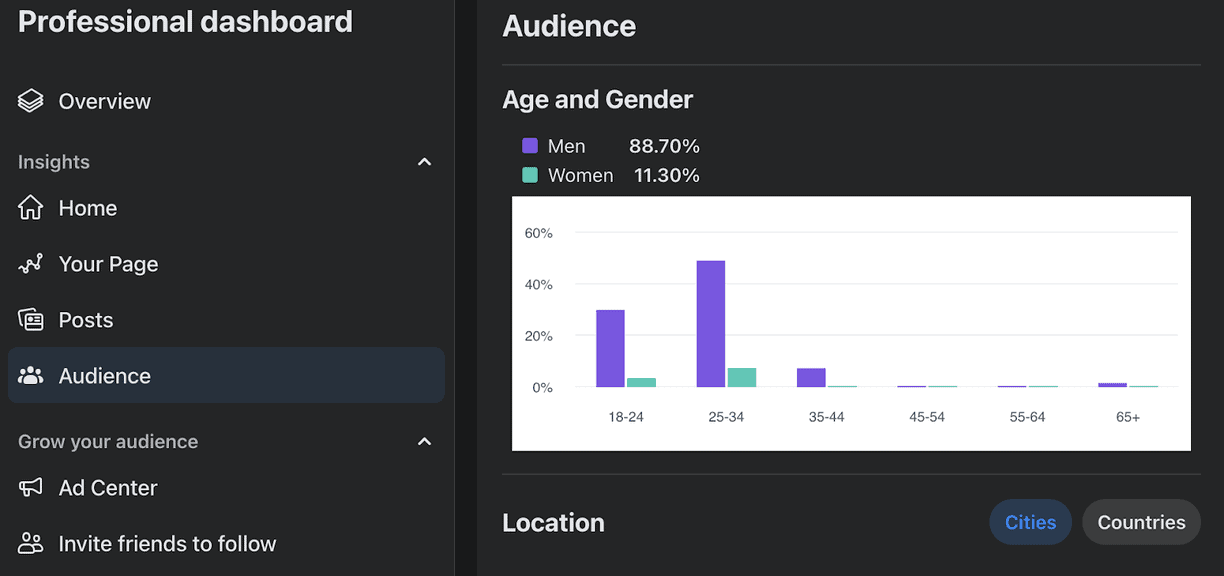
Step 07: Create Actionable Plans for Your Social Media Strategy
Social media audits can’t be complete without creating an actionable plan.
These plans should be based on the performance data and analysis conducted in the above steps.
So navigate to the Goals section of your social media audit template and list the updated goals for each platform.
Some of these goals can be:
- Tackling down imposter accounts and reserving usernames in new platforms.
- Increasing content publishing frequency in your best-performing forum.
- Posting content similar to the post with the maximum engagement.
- Creating content to engage the new demographic in your audience.
- Building a prominent social presence by capitalizing on your competitor’s weaknesses.
Incorporating these plans and goals, you can update the social media strategy of a particular brand.
Make sure to set a date next to each plan to review its performance from time to time.
With achievable targets, you can re-evaluate the goals and align them better with the brand’s ultimate social media marketing objectives.

Similar Tutorials To Check Out
All set to perform some thorough social media audits?
Then it’s time to ramp up auditing your content and blog for more effective monetization.
Check out the following guides to learn about them all:
- How to Perform a Content Audit: Conduct a systematic analysis of all your content by exploring how to perform a content audit.
- How to Do a Blog Audit: Evaluate the performance of your blog and make it more effective by reading how to do a blog audit.
- How To Make Money On Social Media: Earn a lucrative income with minimum effort by discovering how to make money on social media.
Wrapping Up
Social media audits may sound daunting, but conducting them is pretty straightforward.
As long as you find a template, you can follow the on-screen tabs and sections to note down all data.
With all the data collected, you can analyze your strengths and weaknesses while planning actions to maximize your opportunities and nullify any threats from competitors.
I hope you enjoyed my 7-steps auditing guideline. Please ask questions in the comments for more details or clarifications.
It would be great if you shared this tutorial with your fans and followers.





